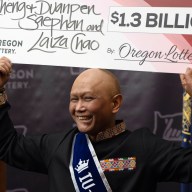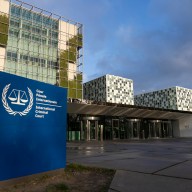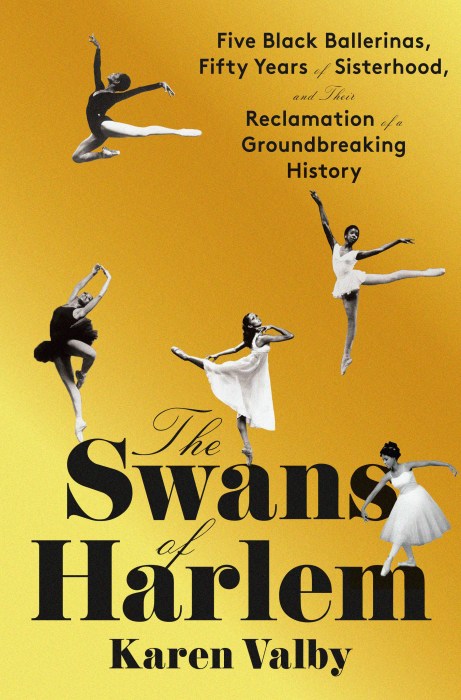 Director Gareth Edwards has helmed the serious reboot of “Godzilla.”
Director Gareth Edwards has helmed the serious reboot of “Godzilla.”
Credit: Getty Images
With his reboot of “Godzilla,” British director Gareth Edwards wanted a more realistic, more serious tone than has been in the majority of the creature’s films. If that’s your aim, it would seem obvious to model him on animals, not on guys in rubber suits smashing around.
“As research we got hundreds of different clips of creatures fighting,” Edwards recalls. They watched tussles with bears, wolves and many more, then test-animated the Godzilla smackdowns based on them. But something curious happened. “When you watch a nature documentary and you don’t have any narration, you don’t know what the hell’s going on. Animals are very bad storytellers. You can’t tell if they’re scared, if they’re gesturing for a better position or trying to leave.”
In the end it really wound up closer to a guy in a suit doing a performance. “You need to understand in his body language if he was tired or angry. He needed a more humane performance.” (Andy Serkis, who’s done the motion-capture animal performance deal before in “Lord of the Rings,” “King Kong” and “Rise of the Planet of the Apes,” wound up helping out.)
Still, he was able to maintain a degree of realism in other respects. Edwards made his name with 2010’s “Monsters,” an indie that married chatty romance to the creature feature, with aliens designed by him personally. (Edwards got his start in F/X departments.) He wanted to carry that low-key vibe to “Godzilla,” such that he could.
 Director Gareth Edwards’ shots like to tease at Godzilla’s presence, as in this shot of the reflection of his spikes in the windows of a school bus.
Director Gareth Edwards’ shots like to tease at Godzilla’s presence, as in this shot of the reflection of his spikes in the windows of a school bus.
Credit: Warner Bros. Pictures
“My goal was to show restraint where we could,” Edwards says. “That sounds silly, because there’s a lot of spectacle. But when there is spectacle, we try to limit the perspective, so you’re using your imagination. The audience is a character in the film.” He wanted viewers to not feel assaulted. “Sometimes things go so quickly you don’t have time to think about them. It’s just an overwhelming attack on the senses. We were trying to harken back to that style of filmmaking, from the late ‘70s and early ‘80s — to have the restraint they had before computer graphics.”
He’s quick to point out, of course, that this film has more than its share of computer imagery. “But we wanted one foot in that world [of realism] to leave some of it to the imagination.”
Edwards argues that the slow burn is more gratifying anyway. “The excitement I get when I watch a film is by not seeing things,” he says. “The second you show something in all its glory, you can’t get scared of it anymore. We wanted to build the film in a way that it incrementally progressed, so that we were always topping ourselves. And when we’ve reached the point where we’ve peaked, we hit the end credits.”
“Godzilla” was also Edwards’ first foray into big budget filmmaking. It still felt small, despite the massive budget. “To some extent when you direct a film you only talk to a handful of people,” he reveals. “Initially it’s like, ‘Why can’t I talk to that guy that’s putting that light up? I feel really bad.’ Then you realize very quickly there’s just not time. The way the machine works is you have these heads of departments that you relate to, then they have teams that go and do everything. So you can convince yourself that you’re only making a film with 10 people.”
The sheer scale of the production wasn’t even fully apparent to Edwards until only recently. “It’s only when you start doing [interviews], walking around New York and seeing billboards that you think, ‘Holy s—, it was a big movie after all.”
Follow Matt Prigge on Twitter @mattprigge
















